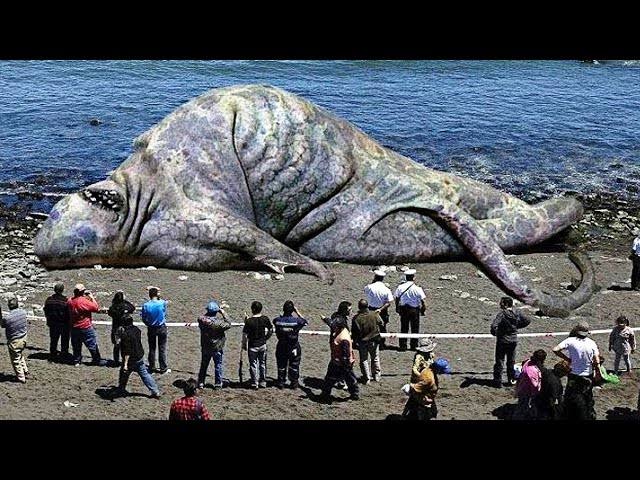There are many magnificent animals in the animal kingdom, and many of them are far smaller and less impressive than humans. Discovering the world’s biggest creatures in 2025 will make us appreciate the diversity and magnificence of life on our planet all the more. These remarkable creatures have adapted to control their habitats in interesting ways, whether they’re in the middle of the ocean or out on land. Come explore with us the fascinating realm of the largest living creatures, illuminating the natural wonders that never cease to astound us with their varied and fascinating array of gigantic features.
Their enormous size isn’t the only thing that makes these animals interesting. That’s how they stay afloat in a world that’s always shifting. Loss of habitat, changing weather patterns, and human interference all pose distinct threats to many of these massive creatures. But they are here, and it is a reminder of how strong nature is and how critical it is to protect these incredible creatures for the next generation. In that case, in the year 2025, what are the ten largest animals on our planet? The wonders of our world are not yet exhausted, so let’s examine in further detail the creatures that never cease to amaze and motivate us.
These Are The Top 10 Biggest Animals in the World
1. Blue Whale
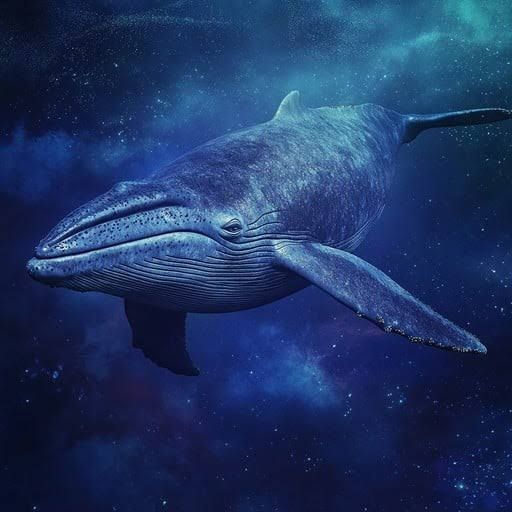
100-110 Feet Long (30-33 Meters)
Because of its enormous size, the blue whale rules the seas as the biggest mammal that has ever lived. The maximum weight for this magnificent marine animal is 200 tons, and its maximum length is 100 to 110 feet. Although blue whales can be spotted in waters all over the world, from the Arctic to the Antarctic, they are most commonly found in the deepest parts of the ocean. Their bodies are slim and elegant, with lighter spots and a bluish-gray coloration. Despite their massive size, blue whales subsist on krill, a microscopic crustacean that can weigh up to four tons each day. Baleen whales swim with their mouths open, filtering krill from the water with their baleen plates. These whales are the most audible creatures on Earth because their low-frequency screams may be heard for miles around. These vocalizations serve as a means of communication among blue whales and also aid them in navigating vast distances.
2. Fin Whale
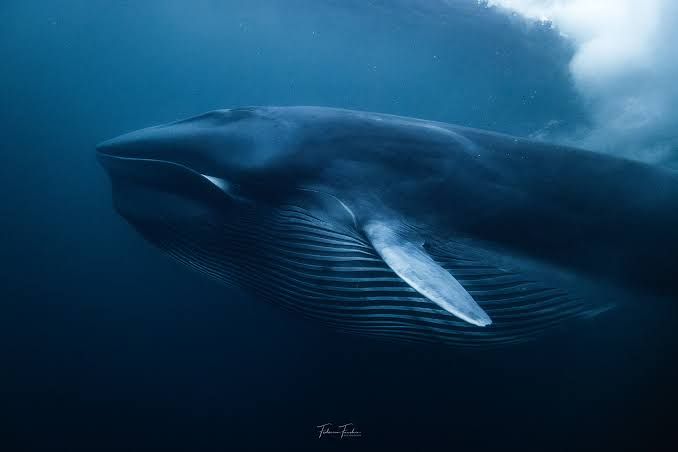
80-90 Feet Long (24-27 Meters)
With a maximum weight of 80 tons and a length of 90 feet, the fin whale is the second-largest animal on the planet. Their preferred habitat is deep waters, although they will occasionally swim along coastlines; they can be found in oceans all across the globe, from the Arctic to the Antarctic. Fin whales are easily identifiable due to their long, slim bodies and a noticeable ridge running the length of their backs. Their speed is legendary; they can swim at speeds of up to 23 mph, which is surprisingly quick for a whale of their size. The baleen plates of a fin whale’s mouth allow it to filter tiny fish and plankton for its meal. Fin whales are friendly, enormous whales that aren’t scared of people, despite their size. In addition to their fearsome strength, these aquatic creatures are renowned for their incredible speed and deftness while breaching the water’s surface.
3. Sperm Whale
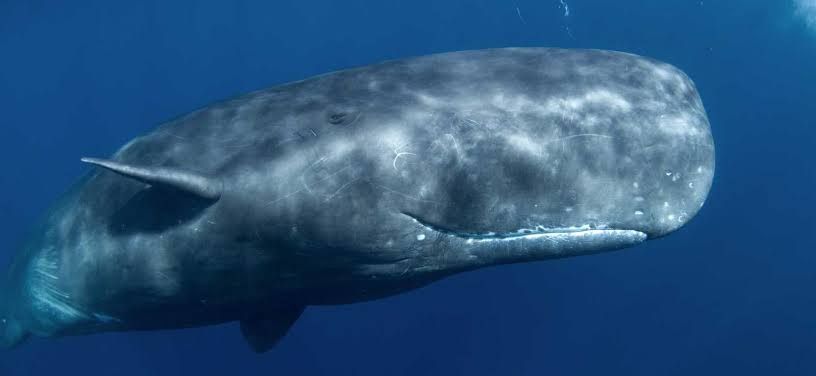
60-67 Feet Long (18-20 Meters)
One of the biggest toothed whales is the sperm whale, which has a big, square-shaped skull. Males can reach a weight of 45–50 tons and a length of 67 feet. Across the globe, from the equator to the poles, sperm whales inhabit the deep waters of the ocean. Their ability to hunt squid, their principal food supply, requires them to dive to depths of more than 10,000 feet, which has brought them particular fame. These whales have the remarkable ability to stay underwater for more than an hour, expertly navigating the depths of the ocean.
4. Whale Shark

40-60 Feet Long (12-18 Meters)
The world’s largest fish, the whale shark, may grow to a weight of 20-30 tons and a length of 60 feet. These enormous animals inhabit the warm-temperate and tropical seas, usually close to the shore. Whale sharks, despite their massive stature, are delicate filter feeders that subsist mostly on plankton, tiny fish, and other invertebrates. While swimming slowly, they filter huge volumes of water using their mouths, which may be as wide as 5 feet. Whale sharks have a stunning appearance because to the white dots and stripes that cover their blue-gray skin. These creatures traverse great distances in quest of optimal eating areas; they are migratory.
5. African Elephant
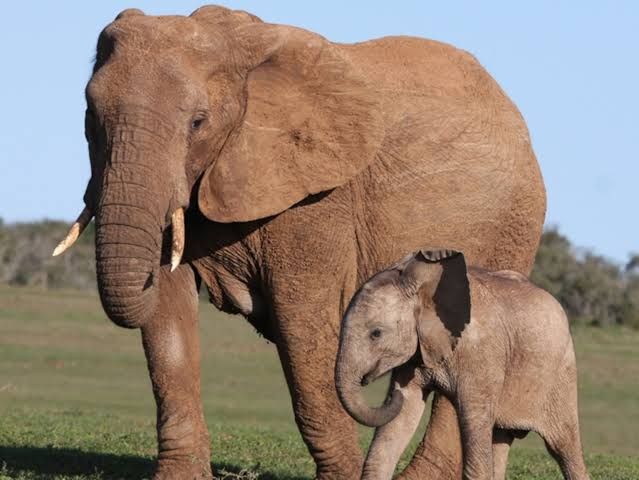
12-13 Feet Tall (3.6-4 Meters)
With a maximum weight of 14,000 pounds and a shoulder height of 13 feet, the African elephant easily qualifies as the largest land mammal. These stunning animals inhabit a wide range of environments in sub-Saharan Africa, from woods to savannas. African elephants are easily recognizable by their enormous earlobes, which aid in maintaining a constant internal temperature, and by their trunks, which serve as tools for foraging, drinking, communicating, and interacting with others. Because of their varied diet, African elephants are classified as herbivores.
6. Colossal Squid
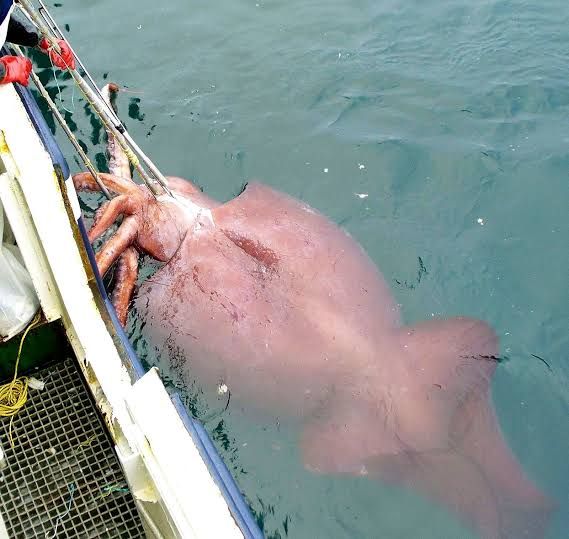
30 Feet Long (9 Meters)
One of the biggest invertebrates on Earth is the giant squid, the biggest squid species. Its maximum weight is 1,100 pounds, and its maximum length is 30 feet. Colossal squids inhabit the deepest parts of the ocean, where they can be found at depths of more than 8,000 feet, close to Antarctica. Among all animals on our planet, these intriguing beings have the biggest eyes bulbous eyes that can reach a diameter of up to 10 inches. The lengthy, thorny tentacles of these squids allow them to catch fish and lesser squids, which they then eat. They can firmly hold prey in their jaws because their tentacles are coated with hooks.
7. Giraffe
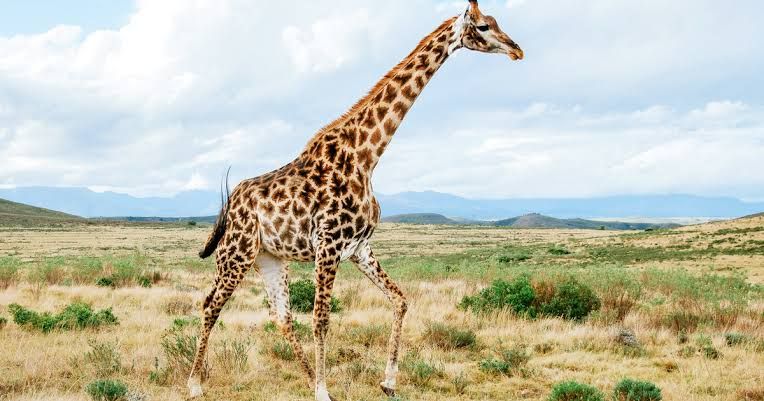
16-18 Feet Tall (4.8-5.5 Meters)
With a maximum height of 18 feet, giraffes far surpass all other land animals in terms of height. Giraffes, which originate in Africa, thrive in wide meadows and savannas, where they eat the leaves of trees, particularly acacias, thanks to their lengthy necks. The herbivore giraffe can pluck leaves from high trees with the aid of its extraordinarily long tongue, which may reach lengths of up to 18 inches. Giraffes are herd animals that are highly sociable. In addition to vocalizations, they use body language including necking, a combative action in which males swing their necks at one other. Giraffes are calm and kind creatures, despite their enormous stature.
8. Saltwater Crocodile
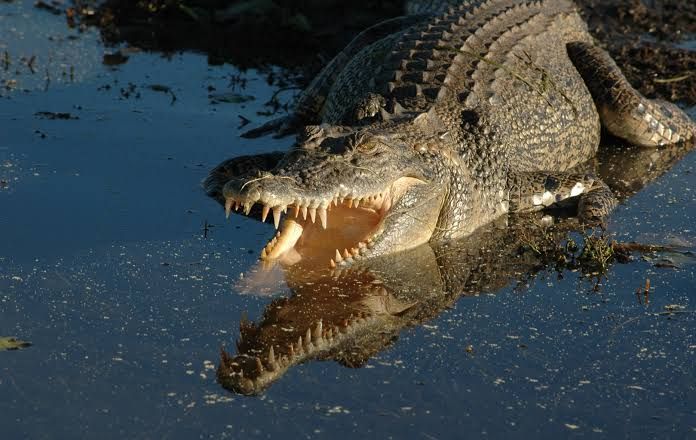
23 Feet Long (7 Meters)
At 23 feet in length and 2,000 pounds in weight, the saltwater crocodile easily qualifies as the largest reptile currently known to exist. The shores of Southeast Asia, Australia, and the eastern Indian subcontinent are home to these top predators. Highly territorial and adaptable, saltwater crocodiles can call either saltwater or freshwater habitats home. Because of their voracious appetites, these crocodiles can devour even the largest birds and mammals that venture into their domain. They wait for the ideal moment to strike, frequently lying just below the water’s surface, as ambush predators.
9. Kodiak Bear

12 Feet Long (3.7 Meters)
One of the biggest brown bear species, the Kodiak can grow to be 12 feet long and 1,500 pounds heavy. The massive and powerful bears get their start in the Alaskan Kodiak Archipelago. As omnivores, they eat a wide variety of foods, including small mammals, fish, and berries. Kodiak bears are solitary animals that congregate around rivers and streams when salmon are spawning. The vast majority of the time, Kodiak bears will remain placid and peaceful until threatened. They can swim great distances and search for food for long periods of time. Hibernation is one of their most interesting habits; it allows them to go months without eating and instead draw on their fat stores for energy.
10. Ostrich
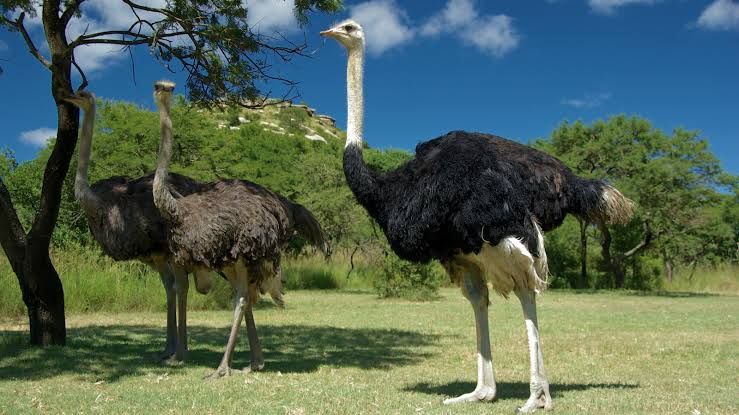
9 Feet Tall (2.7 Meters)
With a maximum weight of 350 pounds and a height of 9 feet, the ostrich is the largest living bird. African savannas and deserts are home to the ostrich, a bird that lacks wings but can run at speeds of 45 mph. They can travel great distances on their quest for food, which mostly comprises of insects, seeds, and plants, thanks to their muscular thighs and long legs. With their long necks, big eyes, and plump feathers, ostriches are easily recognizable. They run in groups and communicate with each other through a variety of vocalizations, despite their enormous size. Ostriches are well-known for their formidable defense mechanism, which is facilitated by their muscular legs.

